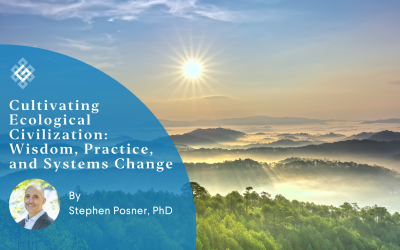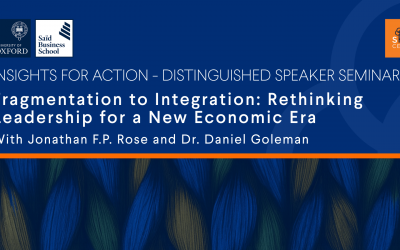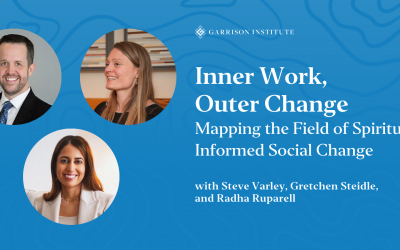Bessel van der Kolk, M.D., is a leading expert on trauma and a psychiatrist noted for his research in the area of post-traumatic stress. On April 29 – May 2, he will be co-leading an experiential workshop at the Garrison Institute that will explore the use of music, theater, movement and writing in recovering from traumatic stress. We recently spoke with him to discuss how these activities can help people heal from trauma.
What does singing and dancing with other people do to the brain?
Our brains are sculpted in the context of our interactions with the people around us. We are made to be in sync with the people around us by picking up on their nuances, what upsets them, and what makes them happy. The whole purpose of our brain is to make us part of a large synchronous network of human beings. Basically all mental illness has to do with your being out of sync with your surroundings. And it’s not really about words and language; it’s about picking up on the rhythm of others.
So syncing with those around us happens primarily in a bodily way and isn’t something that happens through conversation?
Conversations are physical things. Your tone of voice, the music you make together, the way you move your bodies together. If I make that movie where people are speaking Hindi, you’ll have no trouble distinguishing between the people enjoying each other and those who aren’t. You don’t pick up one this by what people say, but by how people say it.
Our culture is so disembodied that we don’t notice those things. I enjoy looking around me and observing other people’s interactions. I can know the status of two people’s relationship by observing the way they move together, how they interrupt each other, and how much their faces light up. One person says something and suddenly the other person raises their eyebrow. Their bodies move back and forth. We’re always dancing with each other.
What does this insight—that we connect to others primarily through the body—have to do with trauma?
Our brain scans of traumatized people show that, as you go into your trauma, the speech center of your brain shuts down. Of course, our vernacular shows that we get that. You’re dumbfounded or you’re struck speechless with terror. That’s when the whole cognitive part of the brain actually shuts down and you start behaving like it. It’s not that you think, “Oh, I’m feeling just like I did when I was molested as a kid,” but you start behaving like a molested kid.
But you don’t know that you’re behaving as a molested kid, you just know that you’re behaving like a very frightened, upset person. A therapist might tell you, “Oh, that must be because you were molested as a kid,” but people don’t come to that conclusion by themselves. That’s because the brain is unable to process traumatic events. If that happens often enough, your brain changes and you develop a brain that chronically perceives the world differently and that perceives yourself differently. So the way you move through the world is different. Your day-to-day experience is different from the day-to-day experience of the people around you.
In what specific ways is your day-to-day experience different?
You may not see that snow falling or a raindrop falling from a leaf. You may not hear the sound of a kid laughing. Perhaps you cannot hear the funny thing that’s being said. So you live in a room where the lights are out with feelings of helplessness, fear, and stuff like that, but you don’t know where they are coming from.
When you’re in this state how can singing and dancing help healing begin?
In our society, the first thing that people think of when dealing with misery and trauma is to either talk about your troubles or take a pill to feel better. What this leaves out are the very basics of how people find comfort and connection.
We come into the world as parts of a dyad with our mothers. We begin our lives in synchrony with another organism—in the womb—communicating only through touch, sounds and movements. This unit gradually extends to our families, other caregivers and larger communities. Our earliest interactions shape our brains and our inner maps of ourselves and the world around us. In order to be integral members of the human community we need be in touch with ourselves, while staying in synch with those around us. In order to do that, we need to pick up each others’ rhythms and movements; motivations and intentions.
In my studies of the effects of trauma and neglect in children and adults, it has become increasingly obvious that the central disturbance of trauma consists of a loss of synchronicity and a loss of voice—my own, unique resonant voice that express what is happening in my body—that is viscerally transmitted to those around us.
The foundation of beginning to deal with being out of sync in our world is sensory integration. We teach kids how to jump on trampolines and throw balls with other, so that they can really pick up how we move together. And cultures all around the world have always dealt with trauma by having rituals that are really focused on synchrony in the sense of moving together. In many countries, if you observe what they do after trauma has occurred, what you see is people dancing and moving together in order to reinstate a sense of connection and becoming part of a larger whole.
Since time immemorial, people have sung together in times of great joy and terror. Still today on special occasions you sing with your family. Of course, one of the oldest things in terms of armies is that they sing together. They go to war while singing, “It’s a Long Way to Tipperary,” or “God Save the Queen.” Every culture has its songs that help people be in sync with each other, and provide them with a sense of belonging and closeness. That makes it possible for them to expose themselves to extreme danger.
Kindergarten teachers know the importance of this and they sing with their kids. But then you get to go to first grade and suddenly you have to grow up and you have to talk. But our basic nature is to sing and to move together.
Read more about Bessel’s work and upcoming workshop in “Sing, Act, Dance, Heal: Creative Arts Therapy Can Open New Pathways of Wellness, Connection, and Joy.”
Resgister for “Trauma: Embodiment, Synchrony and Finding Your Voice” here.



